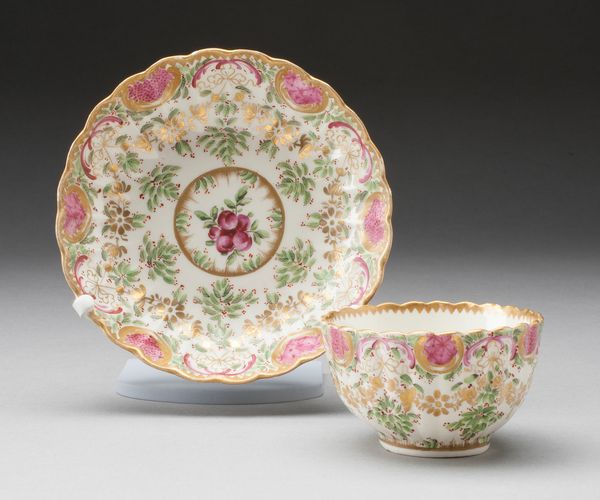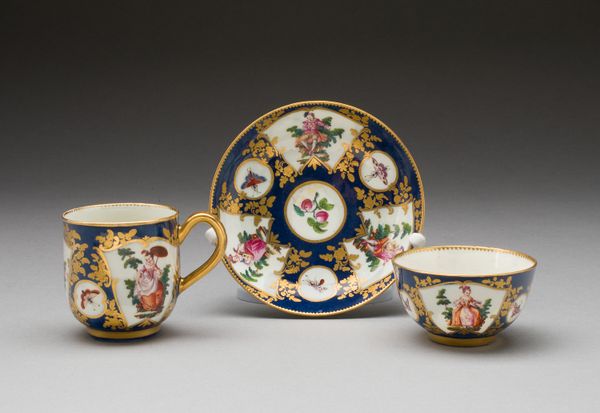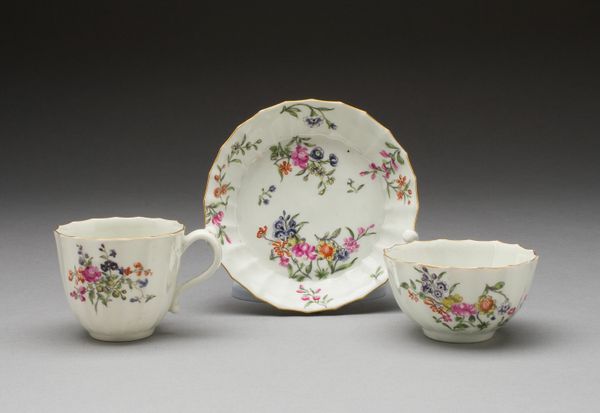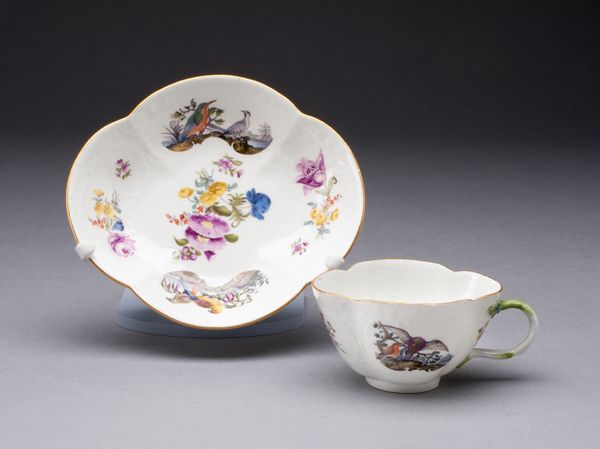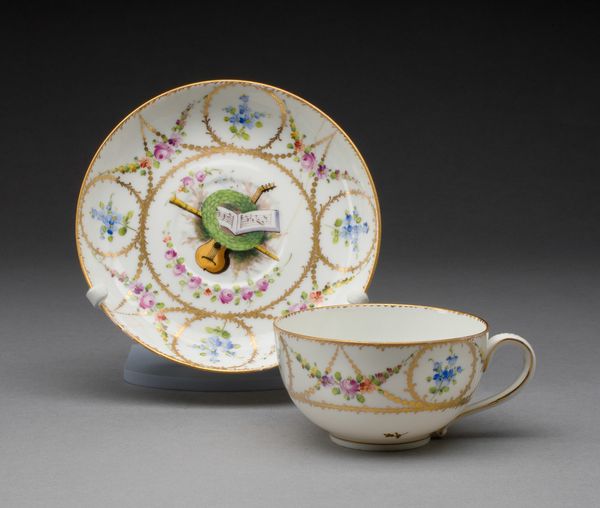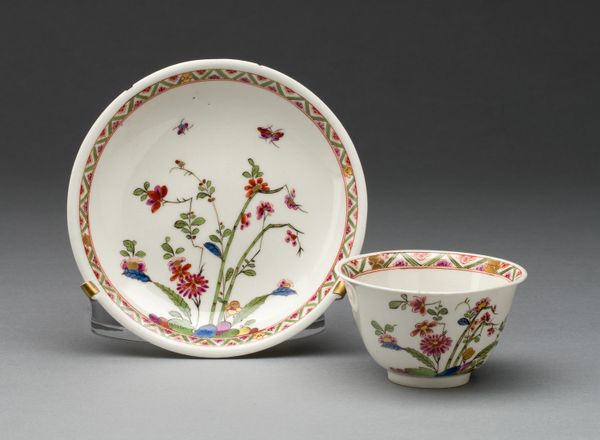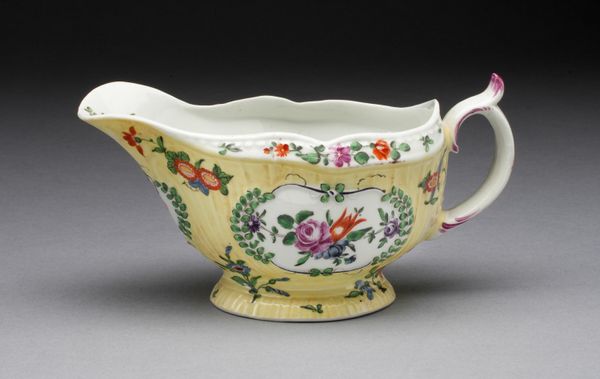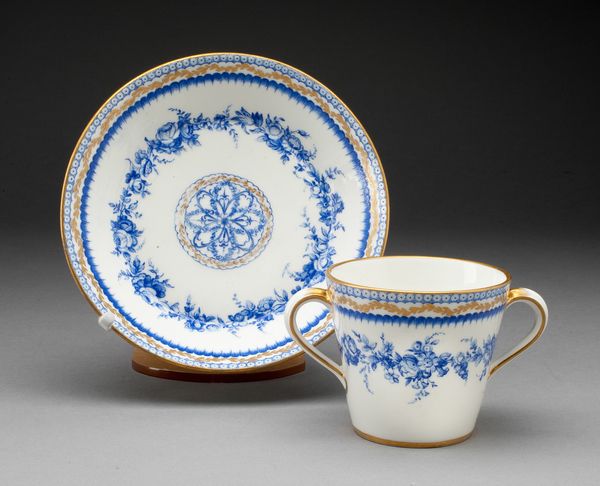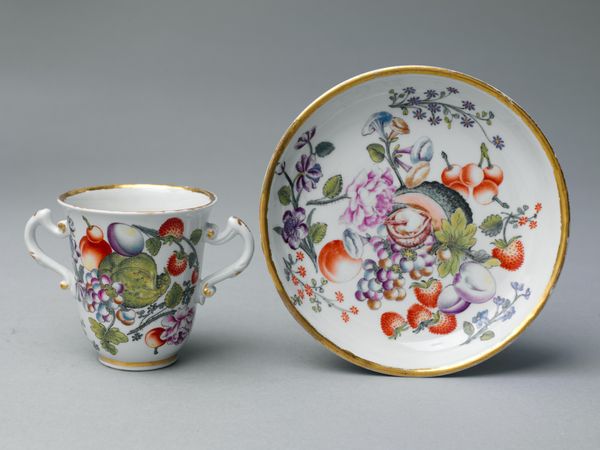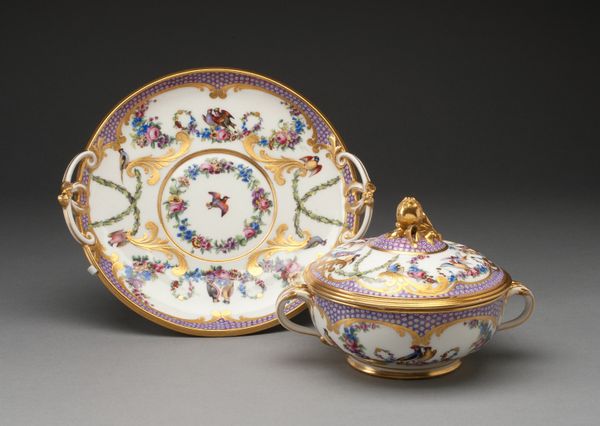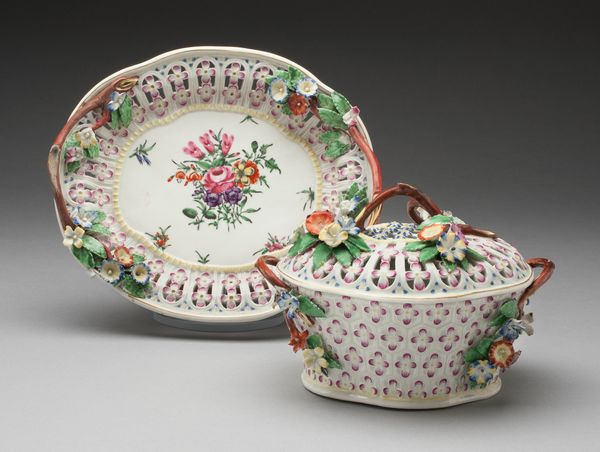
Dimensions: Cup: H. 4.5 cm (1 3/4 in.); Saucer diam. 10.6 cm (4 3/16 in.)
Copyright: Public Domain
Editor: Here we have "Cup and Saucer," made in 1777 by Manufacture nationale de Sèvres. It’s ceramic and porcelain and part of the decorative arts. I find it incredibly delicate with those roses framed by all the gold trim. What story does it tell you? Curator: I see an exquisite object, but also a clear statement of social power through consumption. Consider the porcelain itself: kaolin, the key ingredient, was highly sought after. Sèvres secured exclusive access, ensuring that the factory's output reflected the elite’s ability to command global resources. Notice how the object isn’t just about holding a beverage but declaring an elevated lifestyle? Editor: So, you’re suggesting that the cup and saucer reflect power and trade routes? It's less about the design itself? Curator: The Rococo style is a direct articulation of wealth. What appears as simple ornamentation – the gilded patterns and meticulously painted roses – are markers of value. The labor intensity in the production process makes the functionality almost secondary to the demonstration of taste. Who benefitted, and whose labor produced such luxuries? Editor: It's a coffee set but not *really* for drinking coffee, is what you're saying. Almost a sculptural presentation of class. I never thought about all the production to consider beyond the aesthetic experience. Curator: Exactly. It makes us question what constitutes "art" versus craft, doesn't it? Examining production and material gives it all so much depth. Editor: It really does! I am so much more aware of the labor of luxury that lies underneath the fancy decorations. Thanks!
Comments
No comments
Be the first to comment and join the conversation on the ultimate creative platform.
